Selmer Guitars
Founded by Henri Selmer in 1885, “Selmer (Paris)” started building only wind instruments (clarinettes, saxophones (with their inventor Adolphe Sax) and mouth-pieces.

In 1909, Alexandre Selmer (Henri´s brother) joined the company and they opened their first own shop selling and distributing Selmer Instruments in the United States.
It was in 1922 when Selmer sold the first Selmer-Saxophone, the famous “A-Series, 1922 alto” and “Modele 22”.
During 1931, Henri Selmer meets with Mario Maccaferri (1900-1993), an Italian-born luthier and guitarist.
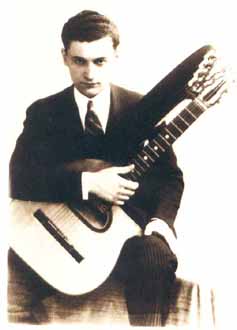
In 1932, they started to build acoustic guitars with the name “Selmer”.
During the beginning of the 20th century, the guitar was predominantly of the classical type, and in the two decades between 1910 and 1930, acoustic guitars with steel strings with larger bodies arrived.
This was the start of these special Selmer acoustic Jazz Guitars , designed by Mario Maccaferri, were to become world famous later on, being played by guitar-maestro Django Reinhardt. This guitars came in the right moment and in the right place!

Guitarists were looking for a powerful sound. Mario Macafferri developed a very special guitar, with a strong sound. The reason for that was that he was asked by many guitar players on how to get higher volume or amplify the sound of guitars.
The first prototype guitar was the model “Hawaiian”, which later will be changed to model “Orchestre” including a cutaway for playing the higher registers.
Django and the “The Hot club of France” required a powerful sound, for the power of their playing on the rhythm and soloing, against the violin and the accordion.
Django was endorsed by Selmer, and in return he received guitars. He played different models, but he adopted the 14 fret jazz model, wich he played all along his career.
One of the biggest challenges for the guitarist at that time, “was to be heard”, so Selmer provided the required sound.


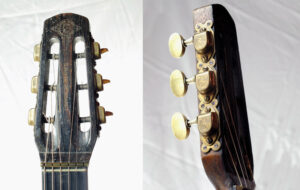
Selmer guitars has been the weapon of choice for many jazz manouche players: Joseph Reinhardt, the ferre brothers (Baro, Sarrane and Matelot), Roger Chaput, Henri Crolla, Bireli Lagrene, Stochelo Rosenberg and many others more.
Stochelo Rosenberg recorded in studio and played live for years with his Selmer #504, which is only 1 number before Django´s #503!
1933 Mario Maccaferri left the selmer company, after having differences with Selmer for his contract of engagement.
Selmer continued the production, promoting their instruments and exporting to different countries of Europe. An interesting fact is that they never marketed the guitars in the United States, due to the competition of Gibson, Martin and other trademarks.
After Maccaferri’s departure, all the other guitar models were abandoned and only de Jazz model was in production, and then became the only model.
Henri Selmer died in 1941, and his son Maurice continued the production in 1946, after the war, until 1952. Between 1932 and 1952, they built around 1.000 amazing guitars!
From 1952 until today, Selmer Paris is dedicated to build Saxophones and clarinets.
The guitar production has been closed since then.
In 1999 Selmer, together with luthier Jean Barault, made a series of 10 Selmer replica guitars, built exactly after the original construction-plans of Mario Macafferri. They made it to celebrate 100 years of the company.
Busato Guitars
Busato Guitars is a brand of handmade guitars that originated in France in the early 1930s by luthier and guitar maker, Bartolo Barnabe “Pablo” Busato (Born in 1902, Chiuppano, Italy). He started building guitars in 1925 until his death in 1960.

Busato guitars are highly regarded for their craftsmanship, sound quality, and unique design. They are considered the first competitors to selmer guitars, as they where the first to develop this acoustic type of guitars.

Busato was known for his signature design which featured a D-shaped soundhole and a unique bracing pattern that resulted in a bright and powerful sound. His guitars were highly sought after by jazz guitarists, and many famous musicians such as Django Reinhardt and Stéphane Grappelli played Busato guitars.
Today, Busato guitars are still made by a select few luthiers who carry on Tony Busato’s tradition of fine craftsmanship and attention to detail. The company produces a range of models, from traditional Selmer-style jazz guitars to custom instruments designed to meet the specific needs of individual players.



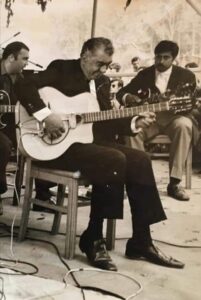
Overall, Busato guitars are highly prized by musicians and collectors alike for their exceptional sound quality, playability, and historical significance.
It is difficult to determine exactly how many guitar models Busato Guitars has produced over the years, as the company has been in operation since the 1930s and has had several different luthiers working on their guitars. However, Busato guitars are generally associated with two main models:
Selmer-style guitars – These are guitars based on the design of the Selmer Maccaferri guitars that were popularized by Django Reinhardt in the 1930s. Busato worked closely with Selmer to produce guitars that had similar features and sound quality, and these instruments remain highly sought after by jazz guitarists today.
Custom guitars – In addition to Selmer-style guitars, Busato has also produced a number of custom instruments designed to meet the specific needs and preferences of individual players. These guitars can vary widely in terms of design, materials, and sound quality, and are often highly prized by collectors.
Overall, while Busato Guitars may not have produced as many different models as some larger guitar companies, the company’s reputation for quality and craftsmanship has made their instruments highly coveted by musicians and collectors alike.
Another interest fact, is that his factory had different addresses. One workshop was located in Rue Orgemont between (1934-1943) and then in Cite Griset NO. 4, in the 11th district of Paris. His original address was from 1926 in Rue de Chaligny 34, between the 12th district of Paris. From 1934 to 1943 he had another atellier in Rue D`Orgemont 40 inside the 20th district of Paris.
Later in 1943 he opener “Everything for Music”, in Boulevard Menilmontant 140 in 20th District. In 1943 he had a new workshop in Rue dÒrgemont into the Cité Griset 4 inside the 11th Parisian Arrondissement. Finally, in 1945, Busato guitars, had a workshop in Avenue de Coeuilly 73 in Champigny Sur Marne.
Another importan fact, is that he trained Jacques Favino, Gino Papiri, Siro Burgassi and Pierre Anastasio, among other.
Di Mauro Guitars: A Legacy of Excellence
For more than 80 years, Di Mauro Guitars has been a name synonymous with quality, craftsmanship, and beauty. Founded by Italian luthier Antoine Di Mauro in the early 20th century, the company has since become one of the most respected and revered guitar makers in the world.

The History of Di Mauro Guitars
Antoine Di Mauro (1900-1976), brother of Joseph Di Mauro (1894-1966) where from Catania, Italy and they arrived in Paris in 1934. Antoine opened his first Workshop in the Rue de Fontarabie in Paris. He made guitars and mandolins. Di Mauro was manufactured in 1993, and now became gold for musicians and collectors.
Antoine Di Mauro began his career as a luthier in Italy, but moved to France in the 1930s to escape the economic hardship of his home country. In Paris, he began making guitars in the Selmer style, which was popular at the time. His guitars were quickly recognized for their superior craftsmanship and sound quality, and before long, Di Mauro Guitars became one of the most sought-after brands in France.

In the 1950s and 60s, the company experienced its golden age, producing some of the most iconic guitars of the era. Many famous musicians, including Django Reinhardt, relied on Di Mauro guitars for their signature sound. Today, these vintage instruments are highly prized by collectors and musicians alike.
After Antoine Di Mauro passed away in 1969, his son Joseph took over the family business. Under his leadership, the company continued to produce high-quality guitars, and even expanded their line to include basses and mandolins. Today, the third generation of the Di Mauro family runs the company, ensuring that their legacy of excellence continues to this day.
The Di Mauro Style
One of the hallmarks of Di Mauro guitars is their unique style. While they were initially modeled after the Selmer guitars of the 1930s, Di Mauro guitars quickly developed a distinct look and sound of their own. They are known for their slender, graceful bodies, which are often adorned with intricate wood inlays and other decorative touches. The sound of a Di Mauro guitar is equally distinctive, with a bright, clear tone that is perfect for jazz, swing, and other styles.


In addition to their standard line of guitars, Di Mauro also produces a range of custom instruments. These one-of-a-kind guitars are designed to the exact specifications of the musician who will be playing them, and are crafted with the same care and attention to detail as all Di Mauro instruments.
Di Mauro Guitars offers a wide range of guitar models to suit every musician’s needs and preferences.
Here are some of the most popular models:
Selmer-style Guitars: These guitars are based on the original design of Antoine Di Mauro and are inspired by the Selmer guitars that were popular in the 1930s. They are known for their distinctive sound and are ideal for jazz, swing, and other styles.
Petite Bouche Guitars: These guitars have a smaller body size than the Selmer-style guitars and are known for their bright, punchy sound. They are a great choice for musicians who want a guitar that is easy to play and has a unique tone.
Grande Bouche Guitars: These guitars have a larger body size than the Selmer-style guitars and are known for their deep, rich sound. They are a great choice for musicians who want a guitar with a lot of volume and projection.
Nylon String Guitars: These guitars are designed for classical and flamenco players and have a warm, mellow sound. They are often made with cedar or spruce tops and are a great choice for musicians who want a guitar with a lot of sustain.
Custom Guitars: Di Mauro Guitars also offers a range of custom guitars that are designed to the exact specifications of the musician who will be playing them. These guitars are crafted with the same care and attention to detail as all Di Mauro instruments and are one-of-a-kind creations.
The models made by the two brothers had different names:
“Boogie Woogie”, “Heart”, “Saint Louis Blues”, “Modele Jazz”, “Chorus”, “Special Chorus” and “Special Chorus Deluxe”, they also created two electric jazz guitars, with the names “E 1” and “E 2” with 1 or 2 guitar pickups.




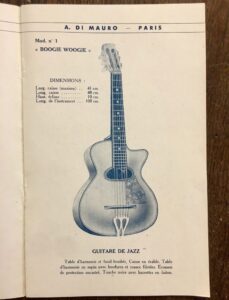



Artist that used Di Mauro Guitars: Django Reinhardt, Bireli Lagrene, Moreno Winterstein, Samy Daussat, Ray Ventura, Francis-Alfred Moeman, Tschavolo Schmitt, Boulou Ferré, Pat Metheny, Mondine and Ninine Garcia played or still play this guitars.

Django Reinhard with a Di Mauro “Boogie boogie” model.
Di Mauro Guitars close its doors in 1993, the legacy of Di Mauro Guitars lives on through the many instruments that are still played and cherished by musicians around the world.
Favino guitars
The company was founded by Jacques Favino, who established the company’s reputation for excellence in the gypsy jazz guitar market.
Jacques Favino, was born in 1920, in Piemont, Italy. In 1923 he moved with his family to the city of Paris in France. Already very early Jacques Favino learned the craft of building instruments.

Favino & Busato
Jacque´s cousin, Gino Papiri, introduced him to Bartolo Busato, who needed help at his workshop. During his work with Busato, he learned a lot of skills that helped to develop his own creations in the future.

Favino & Chauvet
A very important fact is his encounter and partnership with Jean Chauvet (1920-1981). While working for Busato. During 1946, Chauvet was a luthier for violins, who learned in Mirecourt, which is considered the old Mecca of stringed-instrument making in France.
Together with Mario Maccaferri, Bortolo Busato, Joseph Di Mauro, Pierre Anastasio and Jacques Castellucia, Jacques Favino became one of the best French luthiers of all time. Starting in the 1930s, building acoustic jazz guitars that replicated the concept created by the famous Mario Maccaferri for the Henri Selmer Company, which became the worldwide signature of Django Reinhardt.
When we think in gypsy jazz, jazz manouche, or Gypsy music, we think in Selmer guitars, Busato and Favino
These guitars were the voice to the musical style of Django and the Ferret brothers, as many others in the start.
In a very short period of time, gypsy guitar became synonymous of gypsy and swing jazz music, also of the typically French “musette” style music.

We can definitely say that Jacques Favino became one of the most respected guitar makers of the 20th century. He is best known for his Selmer-style guitars, which were heavily influenced by the design of the legendary Django Reinhardt’s guitar. Favino’s instruments were renowned for their rich and complex tonal qualities, as well as their elegant and visually striking designs.
He started working in the workshops of Barnabe Busato in Paris building guitars and learning the secrets behind all his techniques, until he opened his workshop in 1956.
Jacques Favino workshops in France:

The most famous address has been in the Rue de Clignancourt 9, at the bottom underneath the Montmartre in Paris. He had two italian co-workers named Ugo Terráneo and Gino Papiri, both where luthiers.
Later in 1975, Jean-Pierre Favino (Jacques only son), joined the workshop.
He learned the art of guitar making from his father and began building his own guitars in the 1980s. He has since established himself as one of the premier guitar makers of his generation, known for his exquisite craftsmanship, attention to detail, and commitment to preserving the tradition of his father’s work.
During the 70s, they started exporting guitars to the United States of America, opening a company named “Favino North America”.
Finishing the 70s, Jacques Favino started his retirement. He was still building acoustic guitars with Jean-Pierre. His final retirement came in 1985, when he moved to Côte D’Azur around Cannes.
As Jacques stated on this webpage:
“…In 1978, my uncle and my father retired and another uncle, Jean Maddonini, was hired until 1980 to replace them in the team. Ugo left in late 1983. During my first week on my own, I « was going nowhere » with my work, without understanding why. Then I realised that the workshop had been laid out for four people and I had to reorganise it to ergonomically suit one worker. I moved the workbenches around, found my favourite nook. Only my movements and the sound of my tools peopled this space. This went on for seven years.
Wanting to look after the constructions, repairs, settings, customer relations, management and of course answer the phone, I discovered that it was too much for one man, as they say.
The solution presented itself in 1990, when I moved to Castelbiague, in the Haute-Garonne. I discovered that the silence of natural spaces was really what I was looking for.”
On November 15th of 2022, Jean-Pierre Favino made a statement on his official webpage, inforing that he stopped taking orders for handcrafting guitars. The legacy of Favino are his amazing guitars, all around the world.

Dupont Guitars
Maurice Dupont is a highly regarded luthier based in France who is known for his exceptional handcrafted guitars. He specializes in crafting guitars in the style of the legendary Selmer-Maccaferri guitars, which were originally made famous by Django Reinhardt and other gypsy jazz musicians.
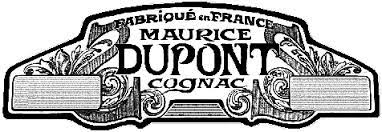
Dupont’s work is characterized by its attention to detail and high level of craftsmanship. He uses only the finest materials, such as premium woods, high-quality hardware, and hand-wound pickups, to create instruments that are not only beautiful but also sound great and play well.
Dupont offers a range of guitar models, including the MD50, MD50 S, MD50 Vintage, and MD50 Crossover, all of which are based on the design of the original Selmer-Maccaferri guitars. These guitars are highly sought after by gypsy jazz musicians and collectors alike, and are prized for their exceptional tone and playability.

Since 1981, Maurice Dupont settled in Boutiers, near Cognac, France. From the early start he dedicated himself to making and repairing guitars and all kinds of instruments.
Dupont quickly gained a reputation for his attention to detail and the high quality of his instruments. He has since become one of the most respected luthiers in the world of gypsy jazz guitar, and his guitars are highly sought after by musicians and collectors alike.
It was in 1986, when Maurice made the first copy of the classic Gypsy Jazz guitar “Selmer-Maccaferri”, per request of Lucien Viollet, a gypsy guitarist with the band Romano Swing.
These types of guitar, become the leading product of Dupont`s workshop, representing half of guitar production.
In words of Francois Charles on his amazing book: “The Story of Selmer Maccaferri Guitars”(page 15):
“…even today, luthiers scattered around the world are still turning out copies. But these copies have never faithfully reproduced the characteristics of the original model, as each luthier wanter to stamp his own personality on this product. The only current exception is the french factor, Maurice Dupont, who copies the master model as scrupulously as possible and achieves a result that is extremely close. He gives joy to guitarists not lucky enough to possess an authentic Selmer.”
He is known worldwide and recognized by artist like Raphael Fays, Biréli Lagrène, Marc Fosset, Romane among others.
The production includes classical guitar, steel string, flat top, archtop and electric guitars.
Maurice Dupont has made instruments to special request, like hawaïan guitar Weissenborn, acoustic and electric basses, banjos and even folding double-basses.
He also offers a range of guitar accessories and replacement parts, including bridges, tailpieces, and pickguards. He continues to work out of his workshop in Cognac, France, where he handcrafts each guitar with a focus on quality and craftsmanship.
In 1989, luthier Maurice Dupont received the title of “Meilleur Ouvrier de France – Best French Craftsperson”, for his work on the production of acoustic instruments.
In addition to his Selmer-style guitars, Dupont also offers a range of other acoustic and electric guitars, including archtops, flattops, and electric solid bodies. Each guitar is handcrafted in his workshop in Cognac, France, using the finest materials and traditional techniques, resulting in instruments of exceptional quality and craftsmanship.
Today, his workshop is active producing




